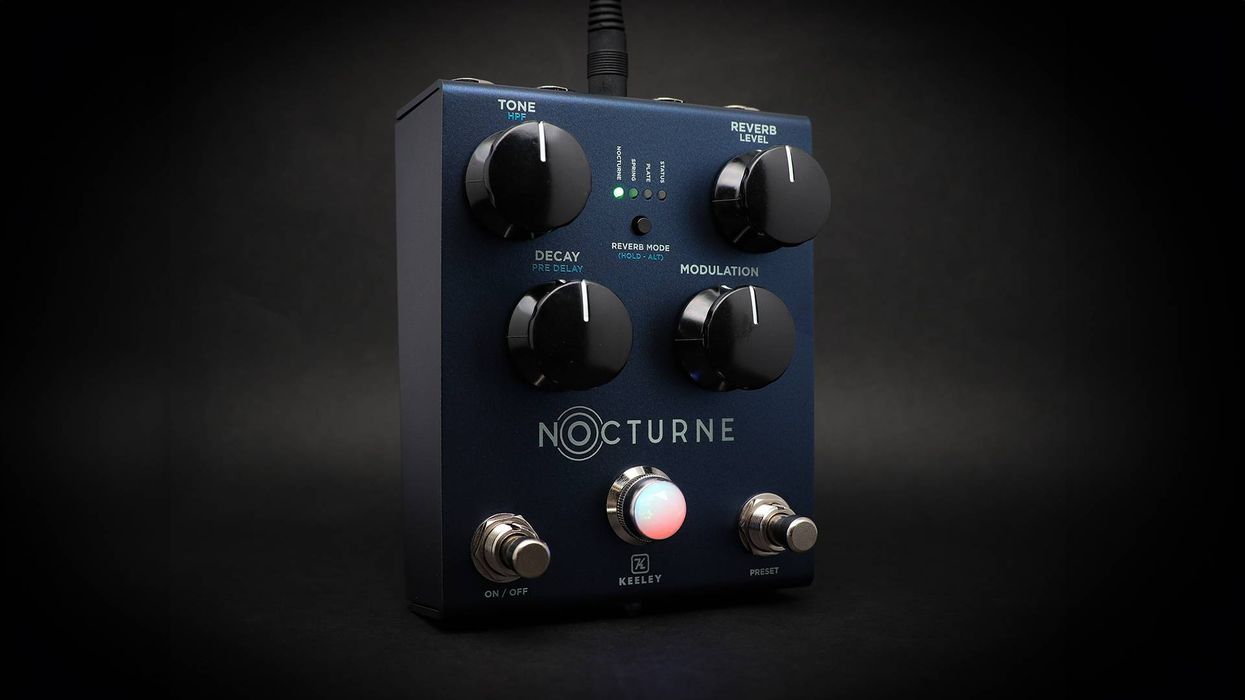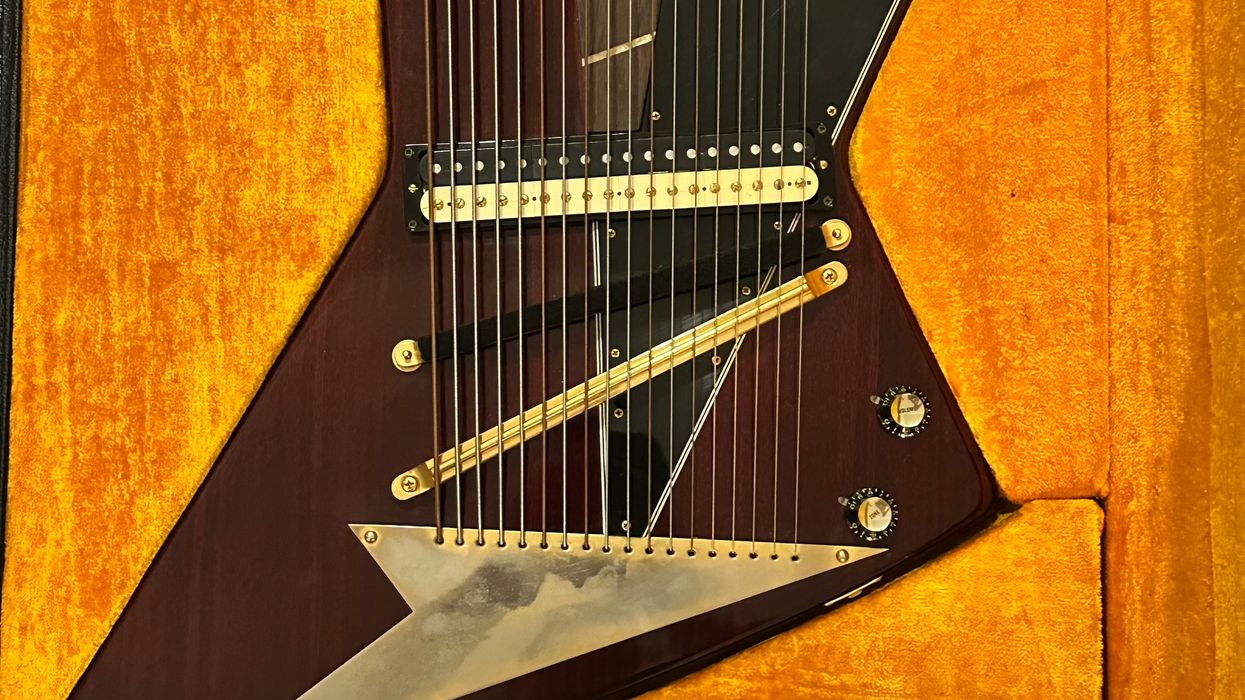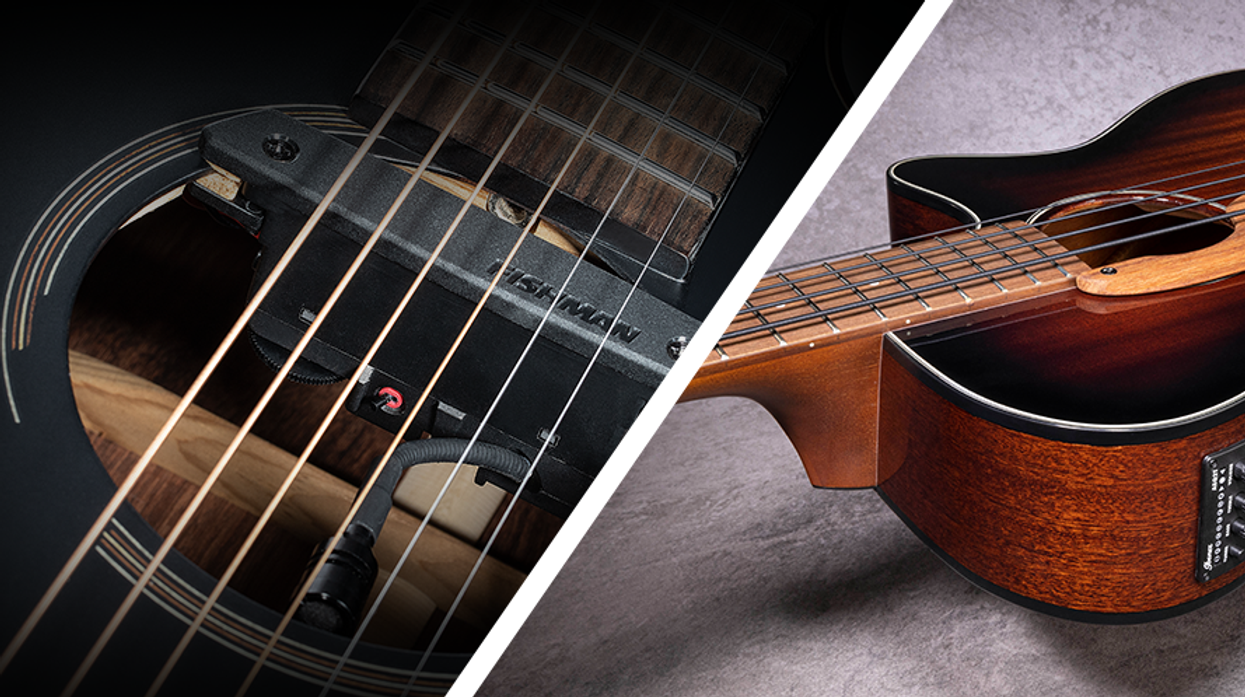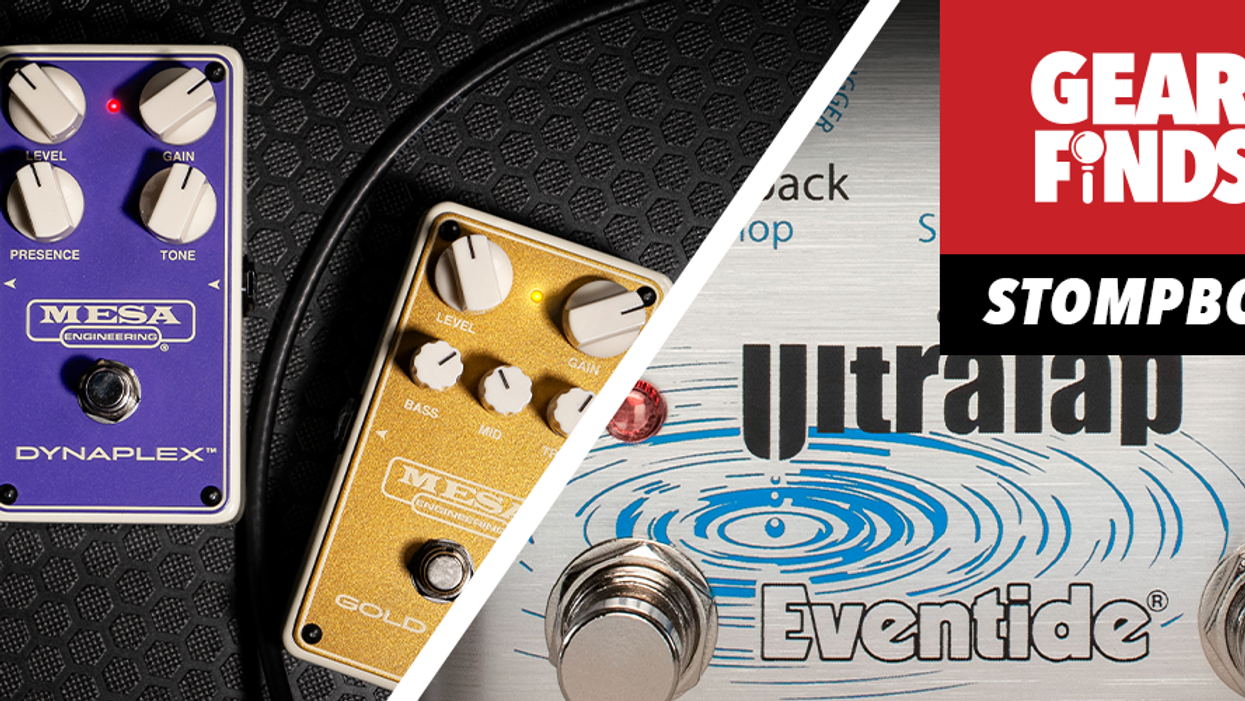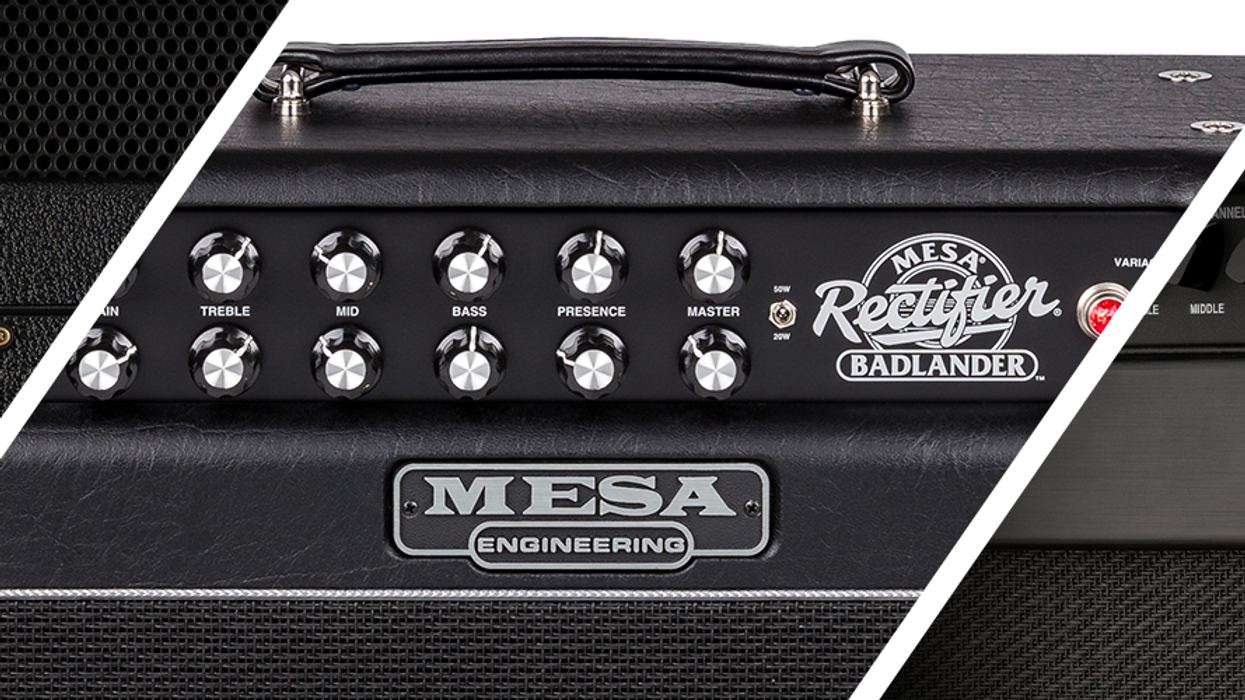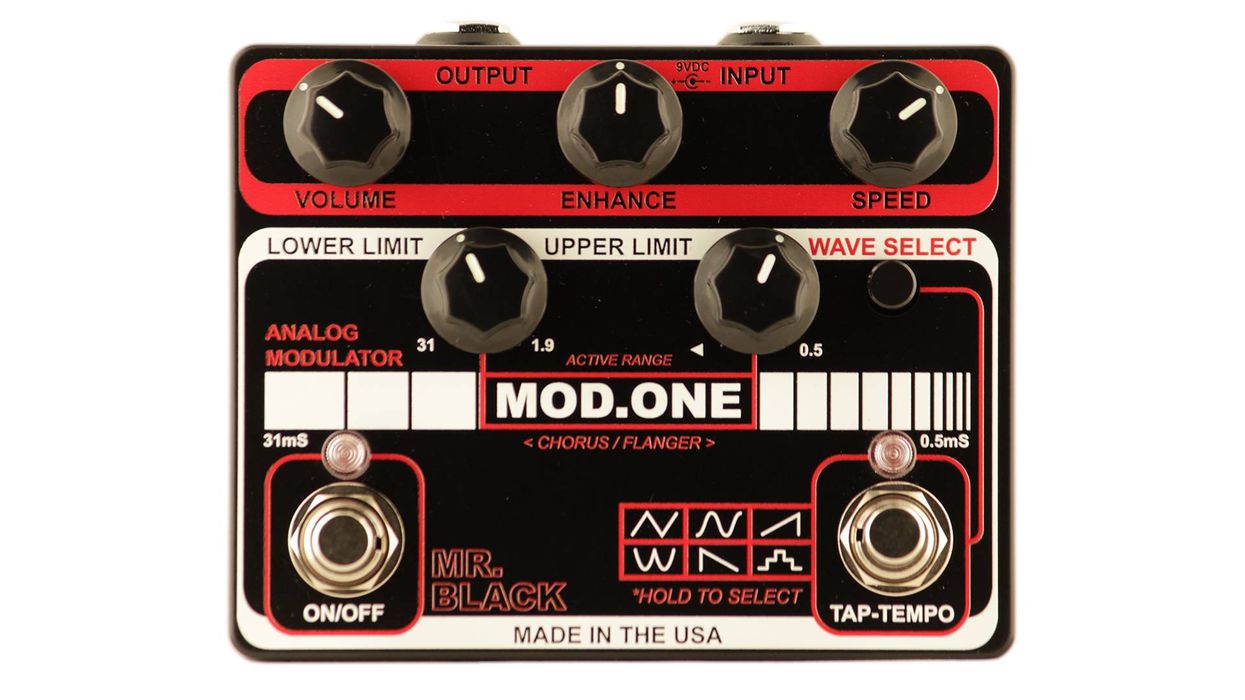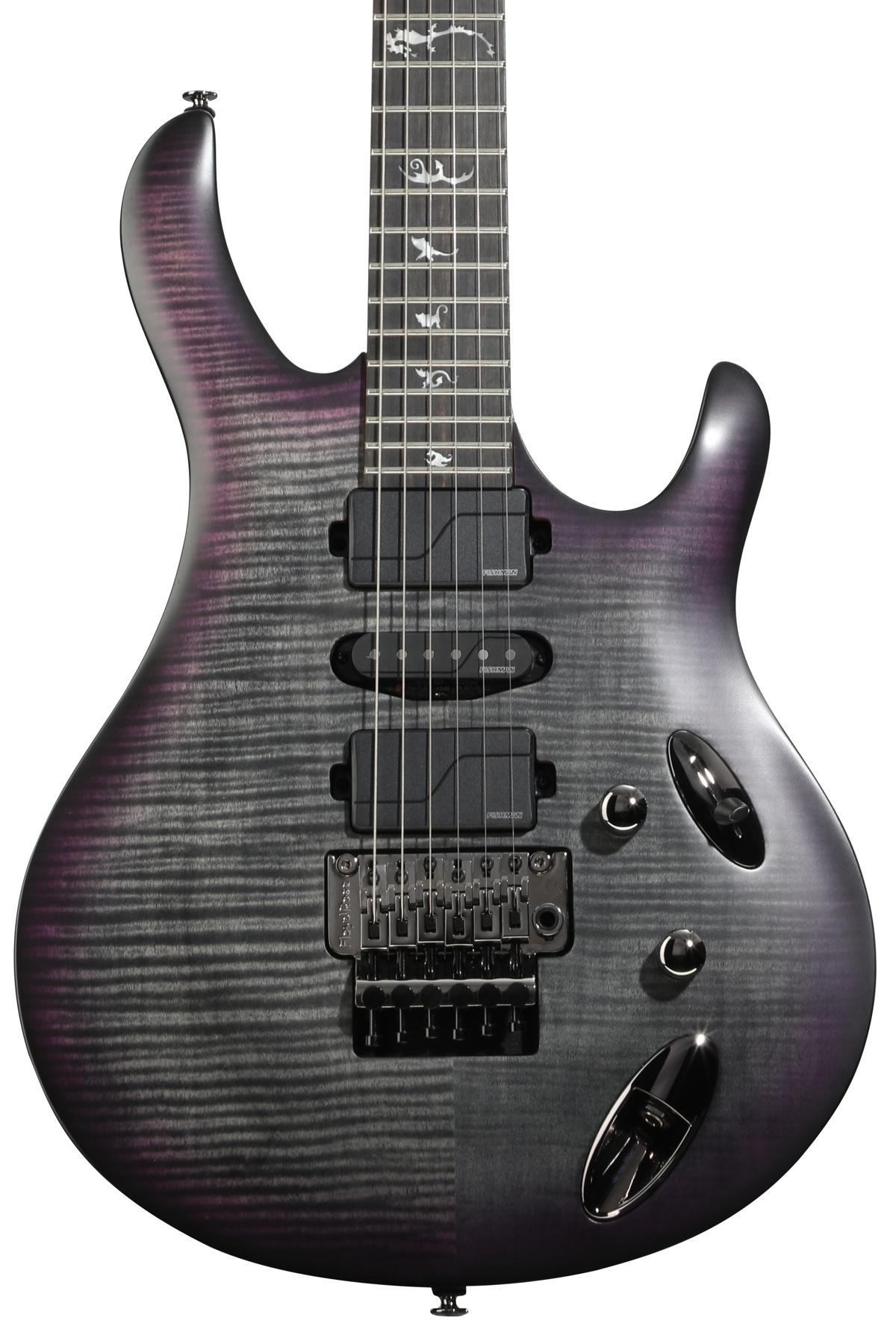Strat traditions aren’t merely deep—they’re also wide. It wasn’t long after the instrument’s 1954 debut before players started tinkering with Leo’s original recipe, and the model’s evolution in the decades since has often been dramatic. These days, the Stratocaster line is like a family tree that can be charted on a vintage/modern graph, with near-exact vintage replicas such as the Fender American Vintage line at one end of the spectrum and humbucker-equipped hotrods at the other.
If a historically accurate American Vintage Strat rated a 9.5 on this imaginary spectrum, the new American Professional Strat would get about a 7.5. At $1,399, the Professional’s price is about average for a U.S.-made Fender Strat—costlier than the American Standard (which the Professional replaces) and American Special instruments, but not as expensive as high-end American Elite and American Vintage models.
A Familiar Feel
The Professional certainly feels like an old-school Strat. If you’re a veteran Strat player, chances are someone could hand you a Professional for the first time just as you stepped onstage, and you could play all night with barely a second thought, except perhaps to admire the quality and consistency of the guitar’s workmanship.
This build is excellent. The narrow/tall frets are perfectly installed, with smoothly rounded ends and a fast, sleek feel. The neck employs Fender’s “deep C” profile, which feels svelte where the neck edges meet the fretboard, but with substantial mass filling your palm. The modern “sonic gray” finish has a subtle blue-green tint and a chic industrial look. The gloss finish polyurethane is mirror-perfect. The rear of the neck wears a thin matte finish.
Smooth Setup
Our Professional arrived with a fabulous factory setup. The intonation was almost perfect. The actionwas slinky-low, yet buzz-free. The trem was set up “Jeff Beck style” (so that maximum pull raises the first string an exact half-step). The pickup heights were just right. This is truly a guitar you can play right out of the case. (And that molded-plastic hardshell case is included.)
The Professional sounds great unplugged. The innate tone is airy and bright, with generous sustain and an attractively “hollow” acoustic-like resonance. The whole instrument just hums when you strum, thanks in part to an expertly carved and seated bone nut. The bridge employs vintage-style two-screw saddles, and the entire assembly rocks smoothly and consistently on its fulcrum points. The pickup selector is the traditional 5-way type.
Modern touches include contemporary Fender tuners, a sleek new string tree design, a “trem’” arm that snaps rather than screws in. But Fender also revisits the under-appreciated Micro-Tilt neck angle adjustment feature that first appeared on oft-maligned 3-bolt-neck Stratocasters and Telecasters from the early ’70s.
Another update is a modernized wiring scheme. On vintage Strats, there’s a tone control each for the neck and middle pickups, but none for the bridge pickup—one of several factors that gives the Strat bridge pickup a “hard to handle” reputation. Here, though, the first tone knob controls the neck pickup, and the second tone knob controls both the middle and bridge pickups. For most applications, this system makes far more sense than the original design. The tone pots are nicely voiced, too. You can get more-than-decent traditional jazz tones when you roll them back.
Ratings
Pros:
Excellent build. Superb traditional tones. Cool wiring and hardware refinements.
Cons:
Not for strict vintage purists.
Tones:
Playability:
Build/Design:
Value:
Street:
$1,399
Fender American Professional Stratocaster
fender.com
Zing Went the Strings of My Strat
The Professional’s snappy unplugged sound promises high-end excitement and, man, does it deliver when plugged in! In every pickup position, tones ring and chime, with snappy-crisp attack and pleasing sustain. But that’s not to say the Professional is excessively bright. Thanks to the guitar’s basic tonal balance and sense of top-end headroom, you can dig in hard for aggressively bright tones that still sound even and listenable.
The Professional houses a trio of single-coils designed by Tim Shaw, which, according to Fender, feature “a proprietary blend of alnico magnet types,” though they offer no further details. Whatever their composition, the pickups provide vintage-approved sounds, but with a bit more treble openness. Everything balances beautifully (though part of that is due to the expert setup). The pickups’ pole pieces are staggered as on a vintage Strat.
Meanwhile, the volume pot is wired using the popular “treble bleed bypass” mod, which adds an extra cap and resistor between two pot lugs. That way, tones lose no treble when you lower the volume knob. After playing a vintage Strat for decades, I found the effect is a bit surreal—but I love it! The revised wiring might be an issue for the small percentage of Strat players who use the volume knob as a secondary tone control. But now you can get crystalline clean tones at lower volume knob settings, which means you can set your amp fairly hot and veer from clean to crunch via the volume pot.
The Verdict
The original Strat design is so iconic and beloved that you have to be cautious about referring to changes as “improvements.” With its updated wiring, pickups, and hardware, the American Professional Stratocaster may not be the best choice for hardcore Strat traditionalists. But the guitar will probably delight—uh—medium-core traditionalists, who will relish both its fine vintage-approved tones and the new possibilities afforded by the revised wiring. And there’s no denying the Professional’s universally fine build quality, zingy resonance, and richly nuanced tones.
Watch the Review Demo:




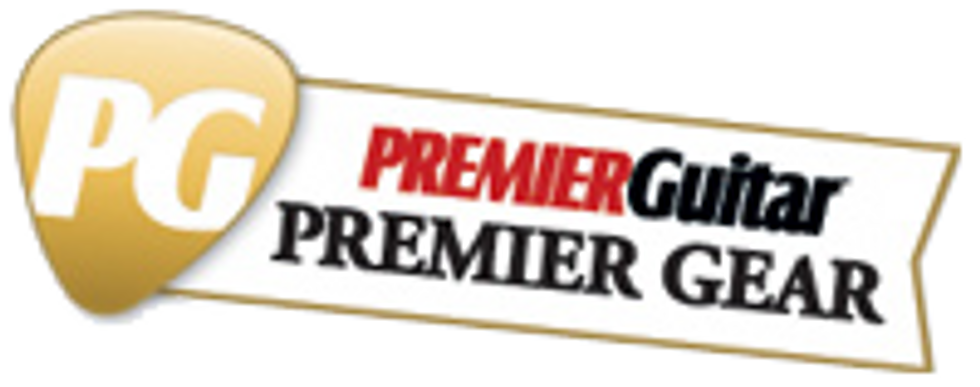




![Rig Rundown: Russian Circles’ Mike Sullivan [2025]](https://www.premierguitar.com/media-library/youtube.jpg?id=62303631&width=1245&height=700&quality=70&coordinates=0%2C0%2C0%2C0)






